 |
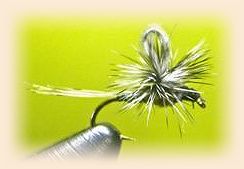 CDL Parachute Mayfly |
|
|
This fly emerged from a nymph tied in jest to reply to a thread started
by Gringo about not being able to tie a plain brown nymph. Gringo
commented that he could not leave well enough alone, and was always
adding flash, or legs, or hackle or other add-ons to his nymph patterns.
I had just purchased a Whiting CDL Tailing Pack in Medium Pardo and
wondered if I could tie a plain brown nymph using only that material. The plain brown CDL nymph fished very well on one of my favorite spring creeks. So I decided to use the concept / technique for some other flies, eventually ending up with a family of eight CDL flies. The parachute mayfly is one of them. This fly, tied as a blue wing olive, has been thoroughly tested not only on that spring creek, but also on a Central Idaho tailwater with some pretty good size rainbows. Twice it has produced the best dry fly fishing that I have had on that piece of water. The fly is simple to tie, durable, and very effective. The technique is limited to smaller flies due to the length of the CDL fibers. Everything tied so far has been size 18 or smaller, but the longer CDL fibers would probably tie a size 16, and possibly a size 14. The materials for the blue wing olive, tied with a mallard flank feather loop wing, are Nature's Spirit superfine dubbing, a CDL feather, a mallard flank feather, and grizzly dry fly hackle to size. ( I've tied this fly using white antron and poly yarns for the wing / post, which are probably better when fishing rough water and for visibility.)s.
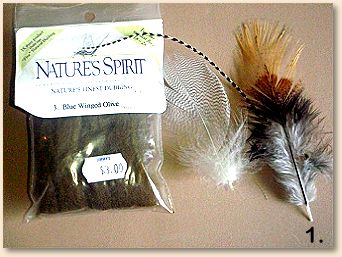 1. Tie in the CDL tailing fibers, adjusting tail to desired length.
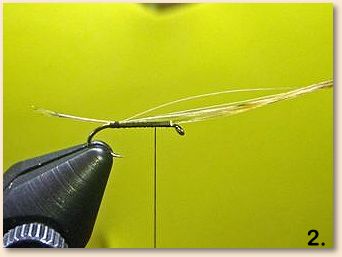 2. Twist the bundle of tailing fibers, using hackle pliers or an electricians clip. Wrap the twisted bundle of fibers forward to form the abdomen. Tie off. After tying off the tailing fibers, the abdomen can be colored with a permanent marking pen.
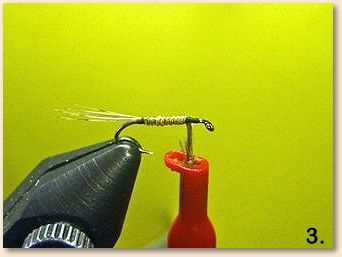 3. Tie in a suitable number of fibers from the mallard flank feather for the wing.
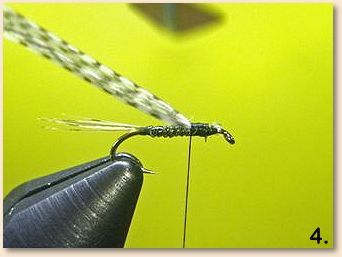 4. Form a loop wing with the mallard flank fibers, tie in securely, and clip waste.
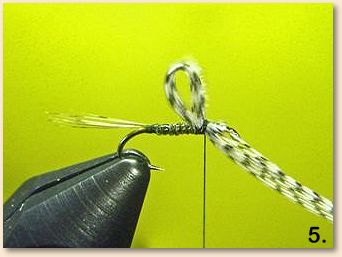 5. Post the wing.
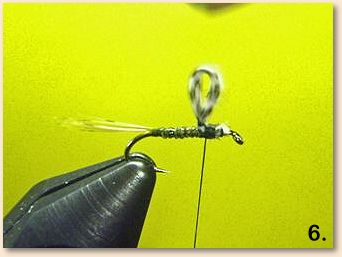 6. Tie in grizzly hackle.
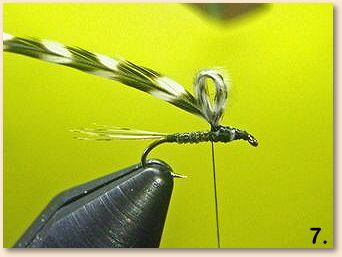 7. Dub the thorax using dubbing appropriate to fly. Here, I'm using bwo superfine dubbing - probably should have dubbed forward closer to the eye.
 8. Wrap hackle five or six turns and tie off. This view is from the underside of the fly.
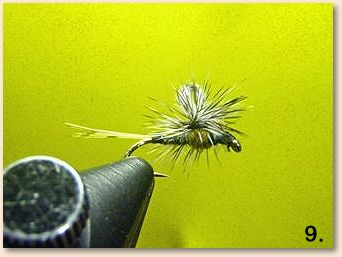 9. And a profile shot of the finished fly.
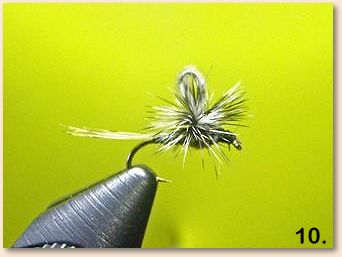 The CDL technique eliminates the step of dubbing an abdomen or tying in and wrapping a quill or biot. The fibers are pretty tough, making for a durable fly. But bottom line, the fish are always right. And they have consistently approved this fly. ~ John For more great flies, check out: Beginning Fly Tying, Intermediate Fly Tying and Advanced Fly Tying.
|